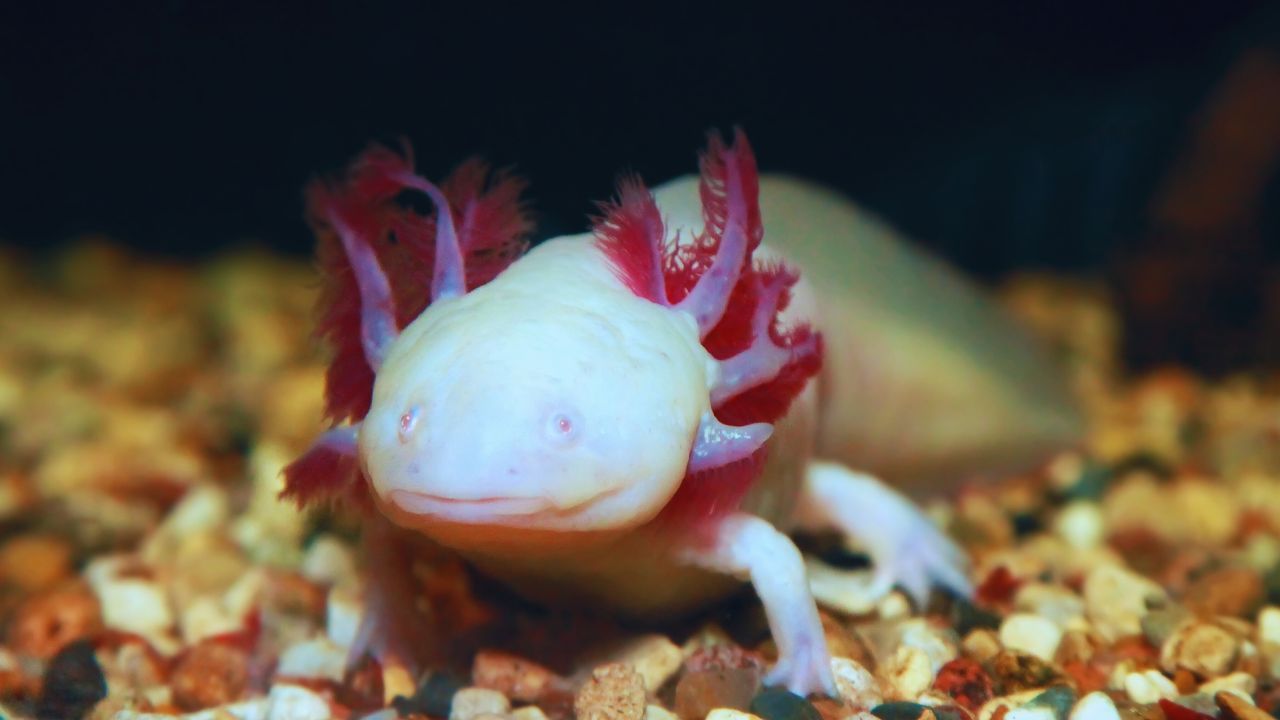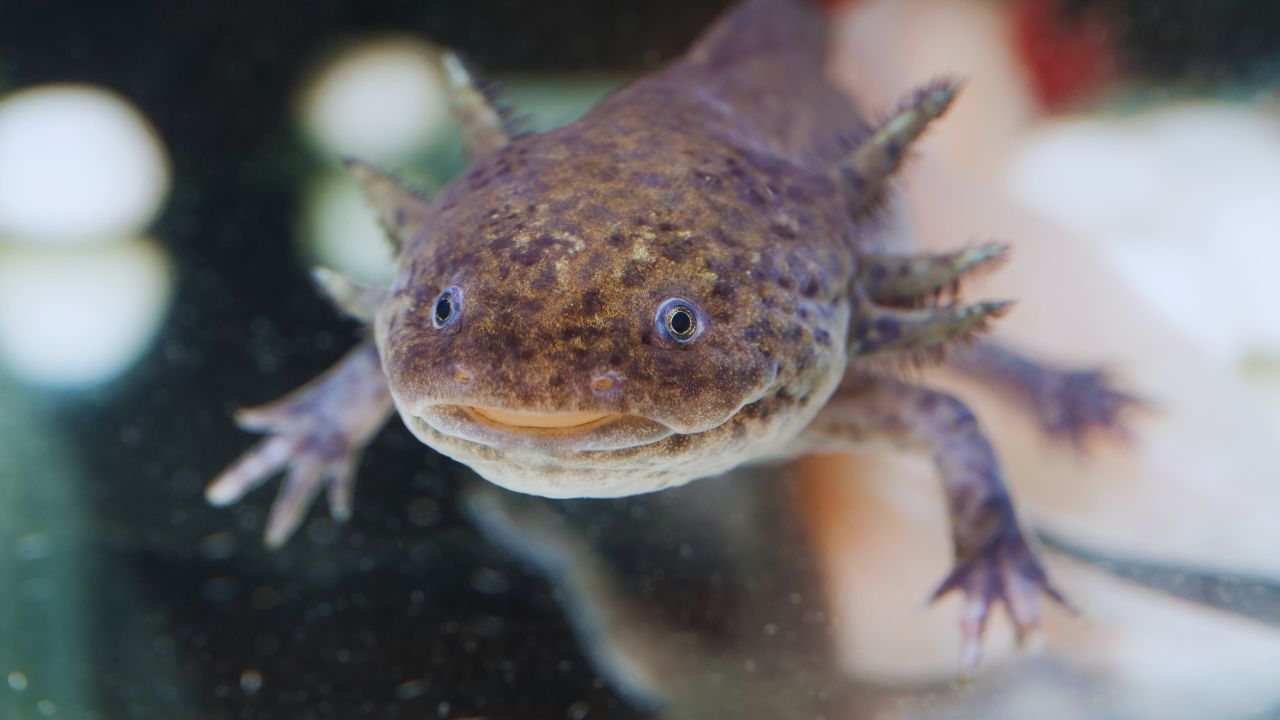How do hearts regrow in axolotls? Do They Have Eternity?
The amazing regeneration powers of the axolotl make it an interesting amphibian, in addition to its unique look. Axolotls do not undergo metamorphosis like most other amphibians; instead, they spend their whole lives with the characteristics of larvae, such as their aquatic lifestyle and gills. Because of their special qualities and their amazing ability to regenerate, axolotls are a topic of great interest to scientists. These animals’ remarkable capacity to replace different bodily parts, including their hearts, begs the following fascinating questions: How can axolotls do this? Does their ability to regenerate mean they are immortal?

How Do Heart Regenerations Occur in Axolotls?
Axolotls have an amazing capacity to rebuild cardiac tissue after damage. The procedure is complex and calls for many steps:
Creation of Wound Epidermis: When an axolotl’s heart is damaged, the surrounding cells create the wound epidermis, which is a protective covering. This outermost layer acts as a stopper against more harm.
Formation of Blastema: After the wound epidermis forms, the cells below it start dividing to create a mass of undifferentiated cells known as a blastema. These cells have the capacity to differentiate into the many kinds of tissues required for regeneration.
Patterning and Development: Following the establishment of the blastema, the cells start to specialize into the precise tissues needed for the repair, including new heart muscle cells, valves, and other anatomy.

Recent research has refuted preconceived notions by demonstrating that inflammation, which often results in scarring, does not considerably impair axolotl regeneration. This finding provides fresh insights into tissue regeneration and emphasizes the salamander’s remarkable capacity for regeneration.
| Step | Description |
|---|---|
| Formation of Wound Epidermis | Cells form a protective layer over the injury site to prevent further damage. |
| Blastema Formation | Cells beneath the wound epidermis divide to form a mass of undifferentiated cells (blastema). |
| Patterning and Development | The blastema cells differentiate into specific tissues needed for repair (e.g., heart muscle cells). |
Are Other Body Parts Regrowing in Axolotls?
Axolotls can indeed regrow a variety of bodily parts. Their capacities for regeneration include the following:
Limbs: Complete limbs, including bones, muscles, and nerves, may regenerate in axolotls. Amazingly, throughout the process, they sometimes even sprout an additional limb.
Tails: Because axolotls are known to regenerate their tails, they are an excellent model species to investigate spinal cord injuries in.
Eye Tissue: Regenerating missing or injured ocular tissue, such as the lens and retina, is possible.
Heart Tissue: One especially interesting component of axolotls’ remarkable regeneration abilities is their ability to repair sections of their heart, as previously discussed.
Central Nervous System: They are also capable of growing new spinal cord segments and other components of their central nervous system.

Not only are these talents astounding, but they also provide clues about future developments in human medicine. Researchers are looking at how treating human ailments like organ damage and aging could be aided by their knowledge of axolotl regeneration.
| Body Part | Regenerative Ability |
|---|---|
| Limbs | Can regrow entire limbs, including bones, muscles, and nerves. |
| Tails | Can regenerate lost or damaged tails. |
| Eye Tissue | Can regenerate parts of the eye, including the lens and retina. |
| Heart Tissue | Can regenerate parts of the heart, such as muscle cells and valves. |
| Central Nervous System | Can regenerate spinal cord segments and other central nervous system parts. |
How Much Time Does It Take for the Regeneration of an Axolotl?
Axolotls regenerate at different rates based on age and the severity of their injuries. Compared to elder axolotls, juveniles regenerate much more quickly. As an illustration:
Young Axolotls: It takes them 40 to 50 days to regrow a missing limb.
Adult Axolotls: A limb’s regeneration usually takes older axolotls three months to complete.
The majority of regeneration processes take a few weeks to finish, yet the age and condition of the axolotl might affect how quickly it regenerates overall.

Regeneration Details and Lifespan
| Aspect | Details |
|---|---|
| Regeneration Speed | Juveniles: 40–50 days for a limb; Adults: ~3 months for a limb. |
| Regrowth Limit | Limbs may be regrown multiple times, but efficiency decreases after five regrowths. |
| Human Comparison | Humans can heal bones, regenerate liver tissue, and regrow fingertips, but not entire limbs. |
| Axolotl Lifespan | 10-15 years in captivity; up to 20 years under optimal conditions. |
| Endangered Status | Critically endangered in the wild due to habitat loss and pollution. |
How many times can the limbs of an axolotl regenerate?
There seems to be a limit to the number of times axolotls may regenerate limbs, based on current studies. The majority of research suggests that when a limb is grown back more than five times, the regeneration process loses some of its effectiveness. This restriction emphasizes that while axolotls have remarkable capacity for regeneration, they are a limited resource.

Can people regenerate similarly to axolotls?
Axolotls can regenerate themselves, while humans cannot. We are capable of some regeneration, however. People can:
Heal Broken Bones: Following a fracture, our bones are capable of healing.
Regenerate Liver Tissue: The liver may heal from injury because of its remarkable potential for regeneration.
Grow Fingertips: Fingertip tissue may regenerate to some degree in newborns and early children.
Even though humans are currently unable to regenerate whole limbs or organs, scientists believe that by better understanding axolotls’ regenerative mechanisms, advances in regenerative medicine may someday result. Research is still being done on possible therapies that would enable people to regenerate or mend damaged tissues and organs, much as axolotls do.

Are axolotls immortal?
Axolotls can regenerate themselves rather well, although they are not immortal. Like all living things, they have a natural lifetime, age, and finally pass away. Axolotls in captivity usually survive 10 to 15 years, although under ideal circumstances, some may live up to 20 years.
As a result of serious threats to their natural habitat, pollution, and other environmental concerns, axolotls are classified as severely endangered. The fact that their population is dwindling highlights the need for conservation initiatives in order to preserve these amazing animals.





